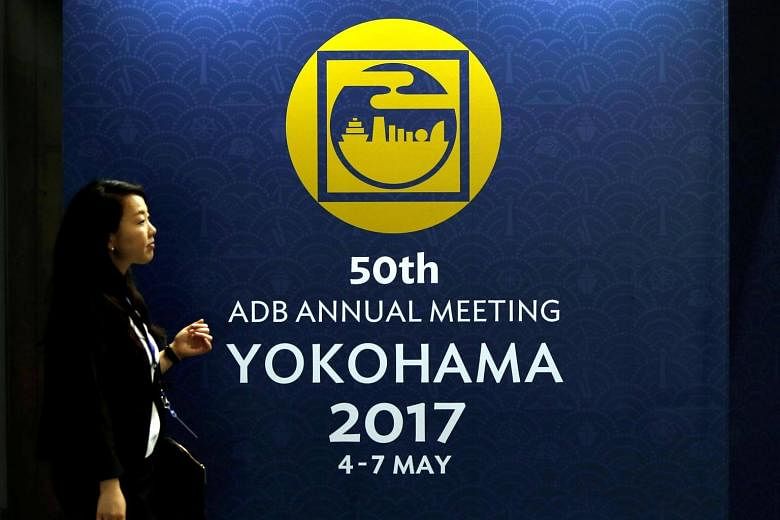TOKYO (THE YOMIURI SHIMBUN/ASIA NEWS NETWORK) - How can the Asian Development Bank (ADB) meet the brisk demand for infrastructure in Asia, a growth centre of the world? The role of the bank, which has marked a half-century since its foundation, will be further put to the test.
The annual meeting of the bank has taken place in Yokohama - the first time in 10 years it was held in Japan.
Improving infrastructure such as roads and power stations will directly lead to the growth of developing countries. The ADB's contribution to the financing of such projects is not insignificant.
Japan, the largest financial contributor to the bank, has produced all of its nine successive presidents, having taken leadership of the bank in terms of both funding and human resources.
At the meeting, Japan announced a provision of $40 million (S$56 million) for a newly established fund designed to promote high-quality infrastructure investments that take into account economic efficiency and the environment. It can be said Japan has shown determination to continue leading the development of Asia in the future.
Japanese companies excel in infrastructure projects requiring advanced technologies, such as those related to transportation systems and new energies. We hope the new fund will be put on the right track.
Infrastructure demand in Asia is growing rapidly, totaling up to $1.7 trillion a year, whereas the amount lent by the ADB remains at $17.5 billion.
A multilayered system with the ADB at its core is needed to meet as much of the region's financial demand as possible.
The Asian Infrastructure Investment Bank (AIIB), set up in 2015 under the leadership of China, has 70 member states and territories - surpassing the ADB's 67.
Nevertheless, the amount the AIIB lends and the size of its staff are currently only one-tenth that of the ADB. The loans handled by the AIIB are centred on cofinancing operations with the ADB or World Bank.
Concerns remain that the AIIB could be twisted toward the intentions of China if the bank's lineup is expanded and its independently extended loans increase. Japan and the United States have put off joining the bank for this reason.
Stronger cooperation between the ADB and AIIB could foster proper activities at the AIIB.
At the meeting, ADB President Takehiko Nakao said: "The amount of funds needed for infrastructure projects is huge. There is a need [FOR THE ADB]to cooperate with the AIIB." Such remarks are understandable.
Reforming the ADB is also essential. There are strong voices calling for the bank to shorten the screening period for financing requests, which currently takes two years on average. The convenience of the ADB's loans should be enhanced.
It is also important for the ADB to make use of its functions that differ from those of the AIIB, which specialises in financing infrastructure projects. The ADB should engage itself in multifaceted development assistance, including in the public health sector, such as preventing the spread of infectious diseases.
Japan also announced the establishment of a new type of financing arrangement for Asean - a mechanism totaling up to ¥4 trillion (S$50 billion) for financing dollars and yen in the event of a foreign currency shortage in case of a financial crisis.
Having the two wheels - the ADB underpinning regional growth and the new financing arrangements in preparation for crises - spinning in tandem should deepen economic relationships between Japan and other Asian countries.
The Yomiuri Shimbun is a member of The Straits Times media partner Asia News Network, an alliance of 22 news media entitites.

